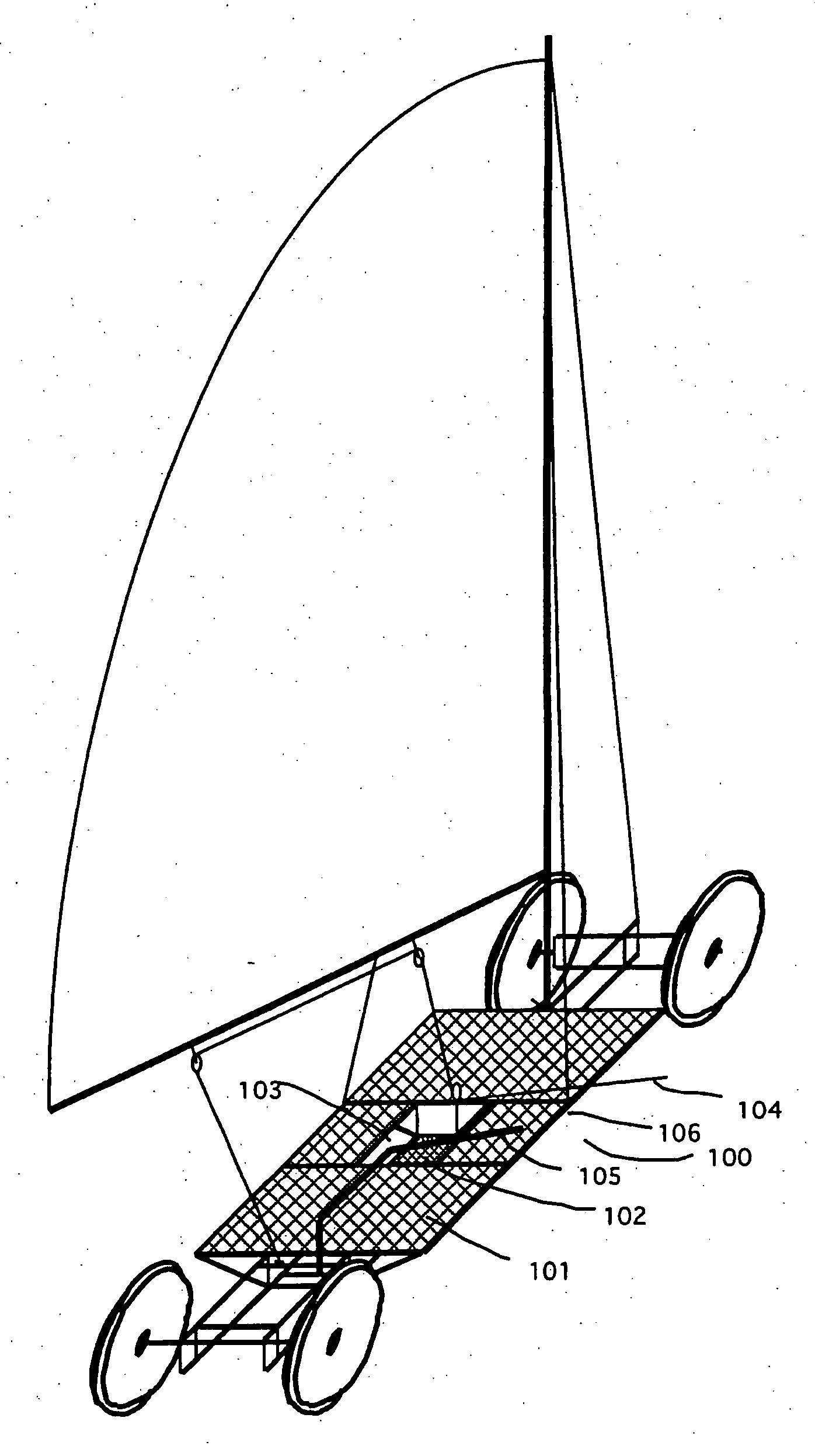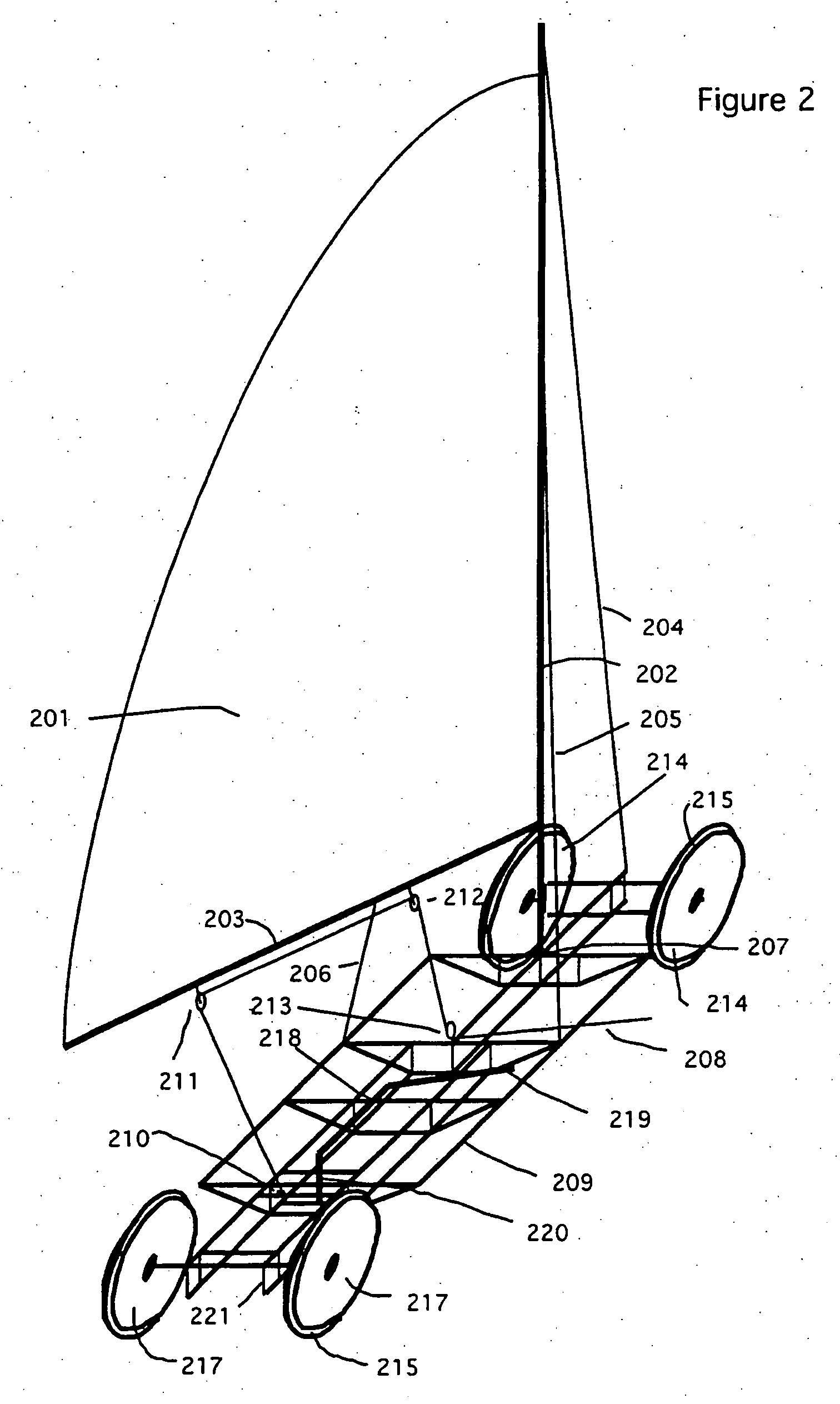Sailing craft with wheels
a technology of sailing craft and wheels, applied in the field of watercraft, can solve the problems of youngsters outgrowing them all too quickly, too heavy, difficult to handle the boat used to teach them,
- Summary
- Abstract
- Description
- Claims
- Application Information
AI Technical Summary
Benefits of technology
Problems solved by technology
Method used
Image
Examples
Embodiment Construction
[0041] Referring to FIG. 1, in one embodiment, a four-wheeled sailboat 100 is designed to be a single-handed sailboat that can be controlled by one sailor, and which handles like other conventional single-handled sailboats in many respects.
[0042] Unlike most catamarans, however, in one embodiment, the boat 100 is narrow so that it can heel slightly to leeward somewhat like a mono-hull. Thus, youngsters who learn to sail on this boat 100 will adjust easily to sailing mono-hulls later in their sailing careers. In addition, youngsters enjoy hiking out in a stiff breeze as the boat begins to heel. These activities are facilitated by a narrow boat 100.
The Deck
[0043] A deck 101 is attached to a frame 106, which is partially shown and is described further below. The deck 101 can cover all or a portion of the frame 106, and can be of any size that is suitable for the design of the craft 100.
[0044] For example, in one embodiment, the deck 101 is a trampoline that covers substantially th...
PUM
 Login to View More
Login to View More Abstract
Description
Claims
Application Information
 Login to View More
Login to View More - R&D
- Intellectual Property
- Life Sciences
- Materials
- Tech Scout
- Unparalleled Data Quality
- Higher Quality Content
- 60% Fewer Hallucinations
Browse by: Latest US Patents, China's latest patents, Technical Efficacy Thesaurus, Application Domain, Technology Topic, Popular Technical Reports.
© 2025 PatSnap. All rights reserved.Legal|Privacy policy|Modern Slavery Act Transparency Statement|Sitemap|About US| Contact US: help@patsnap.com



